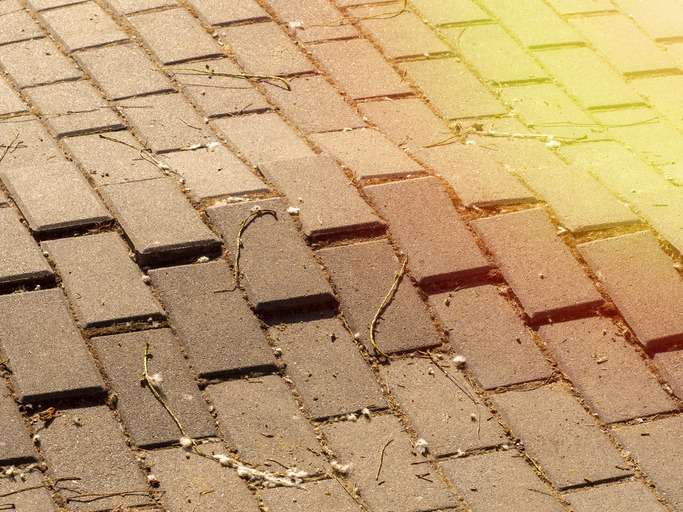Paving can be used in many ways around a property and can be a valuable investment. It is said that a paved driveway can add between $10,000 and $20,000 to a home’s value, depending on the location.
Outdoor areas are popular with home buyers, and there is perhaps a 64.8% ROI on decking. Patios are highly desirable too, and these will also add value to a home. However, ignoring problems with paving can put buyers off as they consider the cost of replacement paving slabs and repairs.
Driveways with cracks, chips, and weeds, will look unsightly to potential buyers. A garden path that has been poorly maintained will also detract from the overall curb appeal of your home. And this could hamper a house sale.
What are the problems with paving around a property?
Firms such as Paving Shopper list poor drainage, cracks, weather damage, and staining, as common problems with pavements and paved areas. Some problems with paving stones stem from the time they were installed, whereas others are linked to general wear and tear.
Many issues can arise with paving, and some can be resolved easily, while others may need more work. Here are 5 common concerns with paving around the home, and what can be done to avoid them, or to fix them.
1. Shaling and separation
This is a natural occurrence that doesn’t relate to the quality of the paving slab. Nevertheless, it is a common problem and one that isn’t pleasing to the eye. Shale or fissile rock is used in outdoor paving often. The problem is that the term fissile means it can be easily split. This leads to shaling or delamination at times.
The shale can sometimes see pieces of the slab break away from the surface area. Layers lying parallel to the top of the slab can simply come away.
The good news is that the slab doesn’t need to be replaced as it will still be structurally sound. The bad news is there is little that can be done except to treat this stone carefully. If you want to use shale and keep it intact then avoid pressure washing.
2. Void bedding paving slabs
This is a problem that frequently occurs at the point of installation. Paving should be set on a firm and even bedding with no gaps, or voids, below. Cutting corners and using bad practices can lead to void bedding.
Problems can then arise later on. Voids attract pests such as insects who will grow into colonies. Voids make tiles more susceptible to cracks as they don’t have the proper support. And voids can fill with water.
To avoid this issue make sure paving is properly bedded at installation time.
3. Tree root removal
When you are planning to design your outdoor space, you should look where tree roots lie. Ideally, these should be removed if they are going to cause issues with paving.
If later on, you are seeing your paving slabs rise due to tree roots, you will have to remove them. This means prising up the paving stones, removing sand and bedding, and cutting away the roots. Then, the slabs will need to be reinstalled properly. Remember not to leave any voids below the paving when reinstalling.
4. Using the wrong type of paving
Some paving slabs work better in certain environments than others. One common problem with paving slabs is staining. This can come from a number of sources including weathering, and water damage.
Tiles made from black limestone for instance are good at hiding stains. While granite is one of the hardest-wearing materials for paving. If you are making a patio, then you may want to consider porcelain paving as it is easy to clean, and doesn’t stain easily. It is also suitable for cold weather as it is frost resistant.
There is no solution to installing the wrong paving except to change it. So, best to plan and consult with paving suppliers first.
5. Poor drainage around paving
This is a common problem with patios and driveways, but one that can be fixed, or avoided. When drawing up plans for your new outdoor area, consider potential drainage problems. Get the basics right at the beginning, and you’ll have more time to worry about how to keep your patio cool and enjoyable later.
You can solve drainage concerns in several ways. These include making drainage holes, cutting a drainage channel, or sloping the base of the patio. Alternatively, resurface your patio with an overlay.
Summary
Paving can represent a small or substantial investment depending on what materials you choose, and how large an area is to be covered. However, paved driveways, patios, and garden paths can also represent money well spent when it comes to selling your home.
But, the paving needs proper installation, and maintenance, if it is going to last. To see a good ROI on your paving, make sure the right materials are used, installed properly, and maintained.

